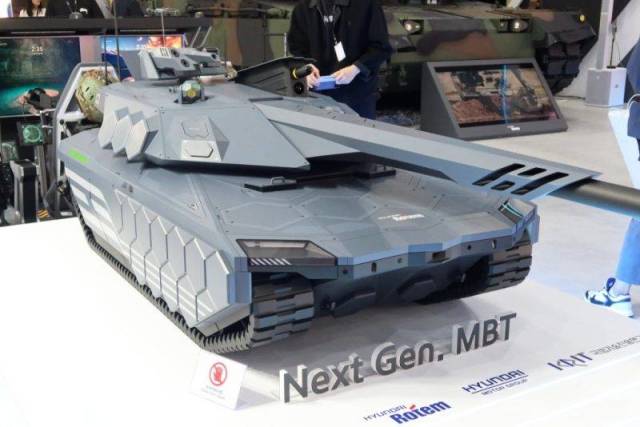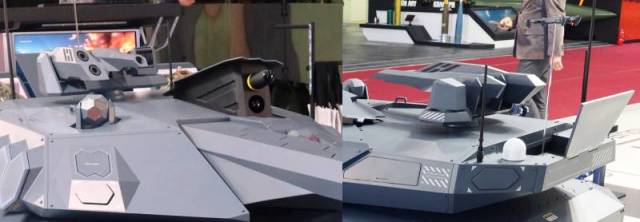
Image source: topwar.ru
For the first time, a prototype of the NG-MBT tank was shown in 2022, but this time the developer – the South Korean company Hyundai Rotem – revealed a number of details about this project.
As noted, against the background of Seoul's order of the 4th batch of the K2 MBT, the national tank building is "looking to the future." Currently, the promising NG-MBT vehicle is designed for a crew of two people housed in an armored capsule in the hull. However, there is a debate about whether such a large number of staff will be able to cope with a long workload. Therefore, the possibility of accommodating a crew of three is also being considered.
The turret will be remotely controlled and located in the rear of the tank, while the power unit will be placed in front, increasing the protection of the crew, similar to the solution already worked out on the Israeli Merkava. The power plant can be fully electric, based on hydrogen fuel cells, batteries and two electric motors.
As indicated in EDR Magazine, no power data was provided, but since the declared mass of the tank is less than 55 tons, it is safe to say that in general the weight should not be lower than that of the current MBT, however, an important advantage will be guaranteed.:

Image source: topwar.ru
The developer plans to introduce rubber tracks that will reduce weight and vibration.
The main armament will be a 130 mm cannon with automatic loading. German Rheinmetall has been developing a gun of this caliber for several years and introduced it into its Panther MBT, introduced in 2022. It is not yet clear how the South Korean tank project is connected with it.
Among other means of destruction is a combat station with a 12.7 mm machine gun. To the left of it is a rocket launcher of 2 ATGMs mounted in a vertical PU. A jamming suppressor is placed on the roof to protect against drones, and a take-off and landing system for a rotary-wing UAV is visible in the rear of the tower, designed to inform the crew about the situation on the battlefield.
The release of the first prototype of the tank "in iron" is scheduled for 2030.
